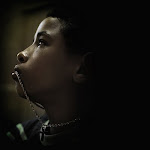
Disasters derail development. At a 2005 meeting in El Salvador, the Community Resilience Working Group was evacuated from their meeting place at the onset of Hurricane Adrian. Planning was interrupted, time was lost, and not all outcomes expected were achieved. This scenario plays itself out daily on a scale far more vast and tragic, in 300 disasters affecting over 250 million people annually – three times more than during the 1970’s.1
Disasters claim the lives of the most vulnerable. While natural disasters claim an average of 51 lives per disaster in highly developed countries, the figure is a staggering 589 deaths per disaster in countries of low human development.2 It is within this context that the concept of community resilience has gained significance.
The 2004 International Federation of Red Cross (IFRC) World Disasters Report refers to a meta-shift in thinking about disasters and development; focusing on capacities of people as opposed to only need. The term “community resilience” has come into use recently, out of the convergence between the two historically polarised camps of relief and development. In short, resilience refers to the capacity to withstand and respond to unanticipated danger or crisis, and the ability to bounce back. Community resilience involves the equally important internal and external aspects of life in a community. External refers to interventions from outside the community. Internal refers to a community’s capacity to access its own resources, organise itself, and withstand and bounce back from negative change. Building the natural resilience of people at the community level has been shown to be the best way to reduce the affects of disaster.3
What are examples of community resilience in practice? In Darfur, during the 1985 famine, a woman preserved her millet seed for planting by mixing it with sand, to prevent her hungry children from eating it.4 She had to choose to sacrifice short-term for long-term resilience. In Uganda, the International Rescue Committee’s Community Resilience and Dialogue programme provides psychosocial rehabilitation, conflict resolution and HIV/AIDS services to victims of conflict. In Southern Africa, three NGOs (including World Vision) assist communities to become more resilient to future droughts, floods and other food security shocks. These examples illustrate that building community resilience is necessarily contextual. Reflecting on these themes:
What are examples of community resilience within your context? (where, why, how?)
What specific areas do you need support in? (information, resources, skills)
How can research be of benefit to you and poor communities you work with?
1 Source: Alertnet, article by Ibrahim Osman, IFRC, 28 October, 2004.
2 Ibid.
3 Ibid.
4 Story recounted by Alex de Waal, 2004 World Disasters Report, (Geneva: International Federation of Red Cross and Red Crescent Societies, 2000), 12.






No comments:
Post a Comment